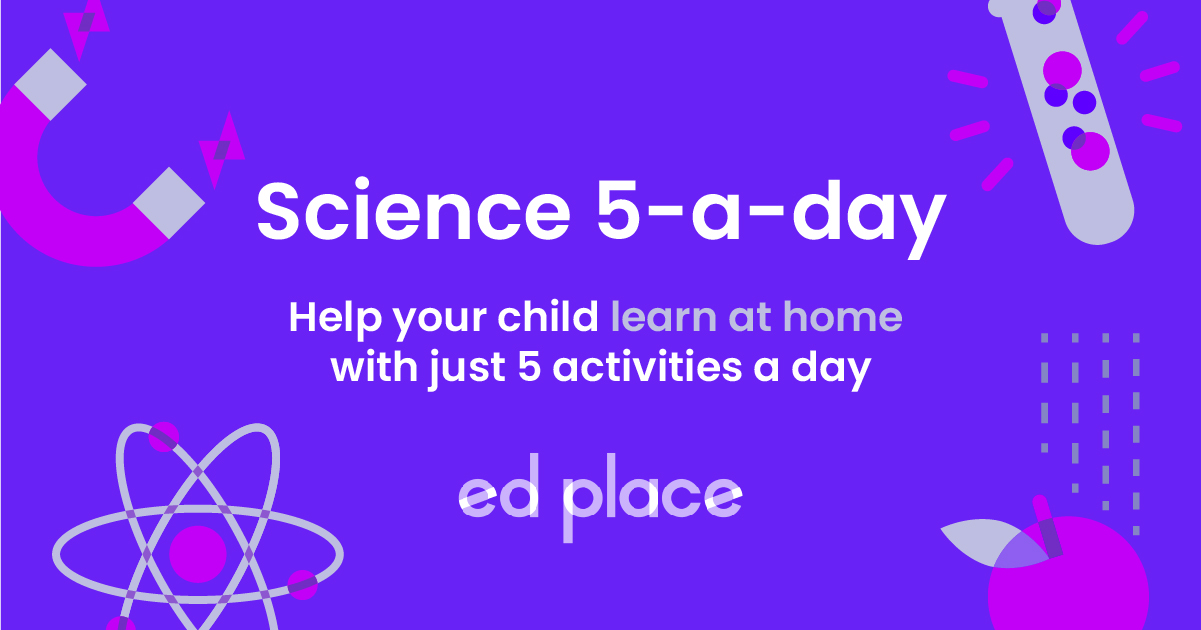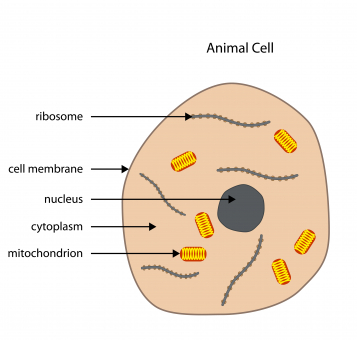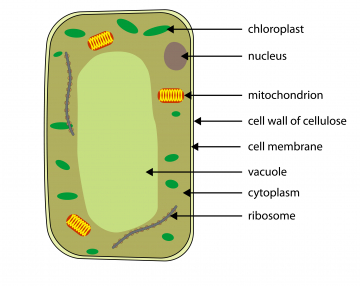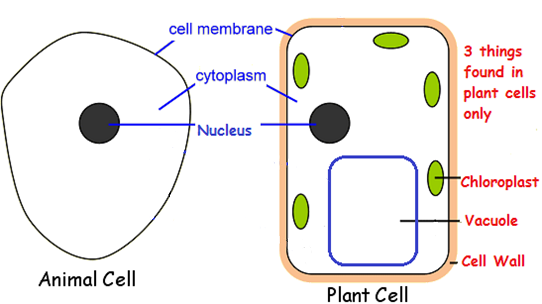
EdPlace's Year 7 home learning science lesson: Animal and Plant Cells
Looking for short lessons to keep your child engaged and learning? Our experienced team of teachers have created English, maths and science lessons for the home, so your child can learn no matter where they are. And, as all activities are self-marked, you really can encourage your child to be an independent learner.
Get them started on the lesson below and then jump into our teacher-created activities to practice what they've learnt. We've recommended five to ensure they feel secure in their knowledge - 5-a-day helps keeps the learning loss at bay (or so we think!).
Are they keen to start practising straight away? Head to the bottom of the page to find the activities.
Now...onto the lesson!
What should Year 7 scientists know?
An animal cell and a plant cell go out together. The animal cell says ‘I feel there’s a wall between us!’
Your child will probably groan at a great joke like that (!) but knowledge of cells in science is the key to building their understanding in all things biology.
At EdPlace, we’re surrounded by highly skilled subject specialists, otherwise known as teachers, who communicate these concepts with children every day. And the best bit, they're ready to share their teaching tips to help your family with home learning. Why not follow the step-by-step approach below to knock down those walls to learning!
We’re confident that if you follow our step-by-step approach below, your child will be able to:
1) Identify plant and animal cells
2) Describe the unique parts of both cells
3) Compare the two cells
Step 1 - Breaking down the language
So what exactly is a cell? All living things are made of cells; they’re the basic building blocks of life. Cells go on to form a huge variety of living organisms, from bacteria to daffodils to gorillas.
Cells contain structures called organelles. These are found inside the cell and often have special jobs to do.
Step 2 - How are plant and animal cells similar?
Animal and plant cells are different shapes and sizes but they have certain organelles in common. These organelles are called the nucleus, cytoplasm and cell membrane. These organelles are super important for the cells to function. Let’s recap the function of these important organelles:
The nucleus contains the cells genetic information or DNA, and it controls all the important activities of the cell.
The cytoplasm is where many of the reactions happen in the cell in a jelly-like substance.
The cell membrane controls what enters or leaves the cell, a bit like the police guarding the Houses of Parliament.


Step 3 - How are these cells different?
Animals are made up of millions of animal cells and similarly, plants are made up of millions of plant cells. Cells have different jobs to do. It’s because of this they’re often shaped differently. It’s important to note that cells aren’t flat but are three-dimensional (3D). Their shape is normally determined by where they’re found in an organism. Let’s look at the differences between plant and animal cells. The easy way to differentiate between a plant and an animal cell is to look for the diagram with more labels! Plant cells generally have more structures then animal cells (at least in terms of diagrams!)

Plant cells like animal cells have a nucleus, cytoplasm and cell membrane. Plant cells also have a cell wall. This surrounds the cell membrane and is made of a strong substance called cellulose. The cell wall helps give the cell support. You will also notice from the diagram above that plant cells have a large shaped space often in the middle of the cell. This is called the vacuole. The vacuole helps the cell to retain its shape and is useful for storing substances.
Another key feature of plant cells are the chloroplasts. These are really important as they contain a pigment called chlorophyll. The chlorophyll absorbs sunlight which is needed for the process of photosynthesis (how plants make glucose or 'food’).
Step 4 - Got it?
So now you’re an expert on animal and plant cells, why not apply your knowledge to the following questions?
Which organelle is being described and what type of cell(s) are they are found in?
a) This cell contains a large irregular shaped space often used for storage
b) This cell has a feature that controls what is allowed to enter and leave the cell
c) This cell has an organelle that is needed for photosynthesis
Compare these structures. Do they belong to animal cells, plant cells or both?
d) Nucleus
e) Cell membrane
f) Chloroplast
g) Cell wall
Step 5 - Apply it!
Why not put your child’s understanding to the test and assign the following 5 activities in this order. All activities are created by teachers and automatically marked. Plus, with an EdPlace subscription, we can automatically progress your child at a level that's right for them. Sending you progress reports along the way so you can track and measure progress, together - brilliant!
Activity 2 - Specialised Cells
Activity 3 - What Living Things Are Made Of
Activity 4 - How Organisms Grow
Activity 5 - Using a Microscope
Keep going! Looking for more activities, different subjects or year groups?
Click the button below to view the EdPlace English, maths, science and 11+ activity library
All English, maths and science from Year 1 - GCSE
Answers
a) Vacuole/plant cell
b) Cell membrane/ Both cells
c) Chloroplast/plant cell
d) Both cells
e) Both cells
f) Plant cells
g) Plant cells








